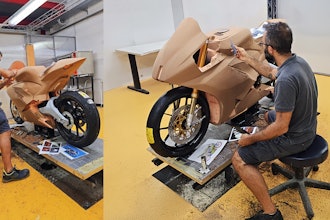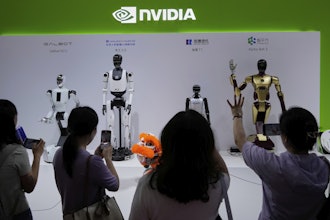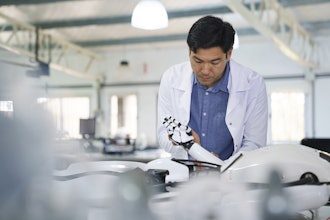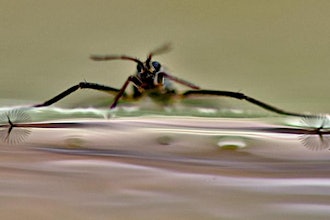Researchers from Swiss Federal Institute of Technology Lausanne (EPFL) have created tiny robots inspired by ants.
Tribots are small, 10-gram robots that work together like ants in a colony. For example, they not only communicate with one another, but assign roles to each other to complete tasks, such as jumping over obstacles or traversing uneven terrain.
Inspired by trap-jaw ants, the three-legged origami robots are T-shaped. According to the researchers, the design is so simple that they can be assembled in minutes, which makes them ideal for mass production.
The Tribots operate autonomously and untethered using onboard infrared and proximity sensors. According to the researchers, trap-jaw ants escape predators by snapping their jaws together to jump from leaf to leaf. The tribots propel themselves similarly, except they use multiple shape-memory alloy actuators instead of their jaws to crawl, walk, somersault or even jump vertically and horizontally.
What is interesting is that each Tribot is assigned a role: the "leader" tells the other bots what to do. For example, push a little rectangular block from point A to B. The "explorers" look for obstacles in the path, and "workers" work in tandem to get the job done. While the robots have different jobs, they can autonomously change roles if, for example, more workers are needed to move the tiny yellow block.
Like the tiny robots that we have reported on in the past, the Tribots would be ideal for future search and rescue missions.
"Designing minimal and scalable insect-inspired multi-locomotion millirobots" was published in the journal Nature.




















